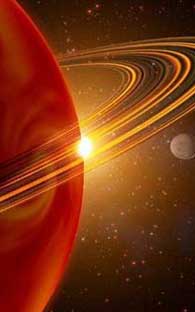Oxygen detect in the atmosphere of Saturn‘s moon
This concentration of oxygen is equivalent to that of the atmosphere of the earth at an altitude of 480 kilometers
 WASHINGTON, March 2. – The Cassini spacecraft has detected a low oxygen concentration in Dione, a moon of Saturn, indicating that it has a tenuous atmosphere, although much less dense than Earth, NASA said today.
WASHINGTON, March 2. – The Cassini spacecraft has detected a low oxygen concentration in Dione, a moon of Saturn, indicating that it has a tenuous atmosphere, although much less dense than Earth, NASA said today.
“Cassini has sniffed molecular oxygen ions in Saturn’s icy moon Dione for the first time,” said in a statement of the mission team.
However, the oxygen ions are widely scattered, one for each 11-cubic centimeters, which makes this concentration equivalent to that of the earth’s atmosphere at an altitude of 480 kilometers.
“We now know that Dione, like the rings of Saturn and its moon Rhea, is a source of oxygen molecules,” said Robert Tokar, a member of the Cassini mission at Los Alamos National Laboratory.
In his view, this finding confirms that oxygen is common in the Saturn system of moons and may originate in processes not involving life forms.
Oxygen, a basic element for life on earth where its concentration is the atmosphere, is about 21 percent, could originate from the moons of Saturn due to solar photons or energetic particles strike the surface of ice water satellite.
Scientists thought that Dione, due to its small size, could hold an atmosphere, and makes new discovery in this small satellite, an object of study much more interesting.
The Cassini probe, launched in 1997, is a mission involving NASA, the European Space Agency (ESA) and the Italian Space Agency which aims to study climate change on Saturn and its moons.
Related articles
- Oxygen Found Around Saturn’s Moon Dione (science.slashdot.org)